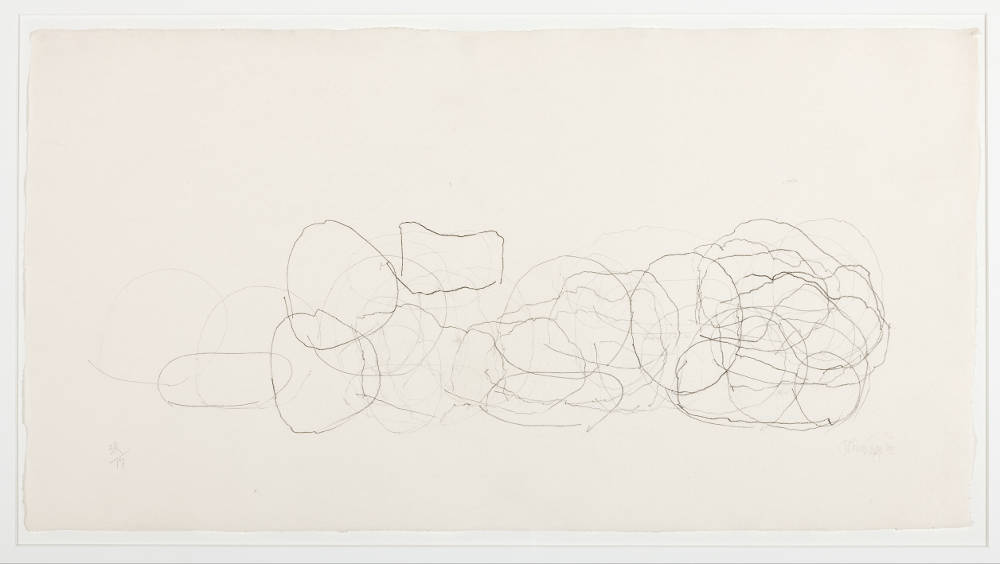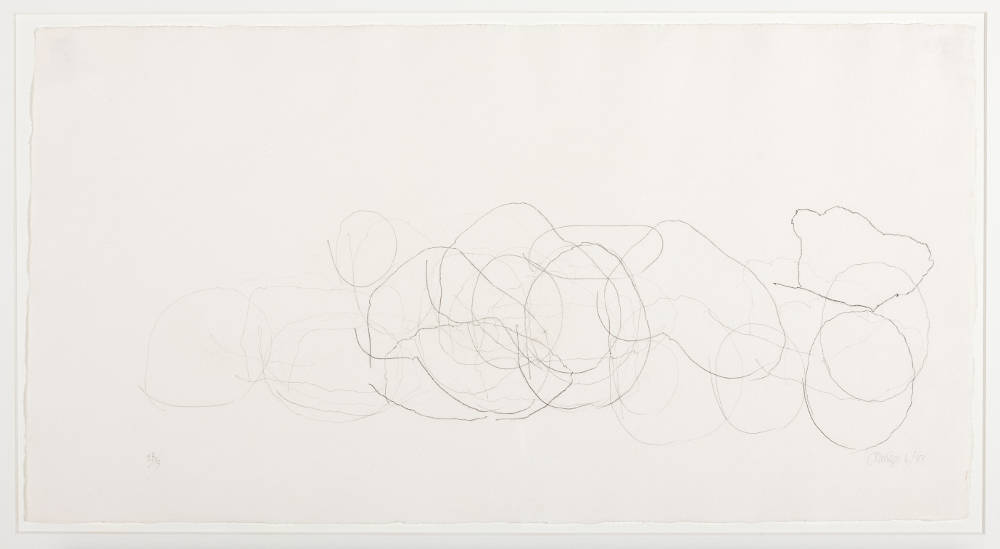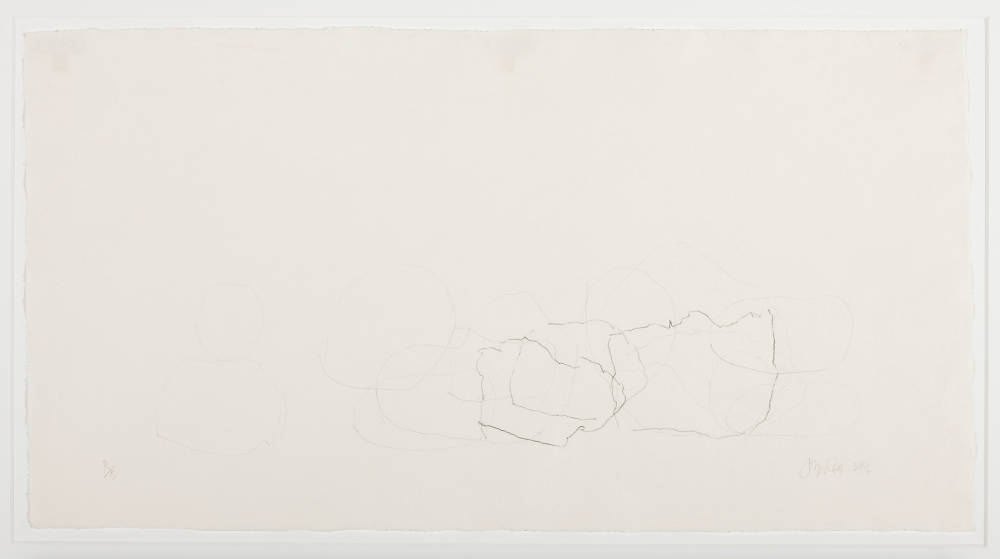ART-PRESENTATION: John Cage-Ryoanji
 Widely considered the most influential composer of our time, John Cage’s inventive and unorthodox approach revolutionised contemporary music and his influence extended across a range of artistic spheres, encompassing visual art and dance. He was central to New York Avant-Garde circles, together with his partner the choreographer Merce Cunningham, forging close friendships with artists including Jasper Johns and Robert Rauschenberg.
Widely considered the most influential composer of our time, John Cage’s inventive and unorthodox approach revolutionised contemporary music and his influence extended across a range of artistic spheres, encompassing visual art and dance. He was central to New York Avant-Garde circles, together with his partner the choreographer Merce Cunningham, forging close friendships with artists including Jasper Johns and Robert Rauschenberg.
By Efi Michalarou
Photo: Galerie Thaddaeus Ropac Archive
Casting light on both the audio and visual interpretations of the most influential composer of our time “Ryoanji”, is installation devoted to his “Ryoanji” series from the early 1980s, inspired by the rock garden at Ryōan-ji (“Temple of the Peaceful Dragon”), a Zen Buddhist temple that Cage first visited in Kyoto, Japan in 1962This installation of 11 “Ryoanji” drawings and 15 recordings of his “Ryoanji” compositions for various instruments focuses on how John Cage expressed his ideas and the garden’s sensibility in both his audio and visual interpretations. Cage first visited the Ryoanji Temple and its early 16tt Century rock garden in 1962, during a concert tour of Japan (Tokyo, Osaka, Kyoto, Sapporo) with David Tudor, Toshi Ichiyanagi, and Yoko Ono. Measuring 30 x 10 meters, the garden consists of carefully raked white pebbles with 15 rocks arranged seemingly at random. Over a period of ten years, the last decade of his life, Cage devoted himself to drawings addressing the aesthetic order of the complex that is revered in Japan as a perfect depiction of nature. As with all of his late artistic endeavors, Cage developed chance techniques for each compositional action in the making of these works — for example, in choosing and positioning the stones that would be circled by the artist’s pencil on the paper on in choosing which graphite density to use. In 1982, when Cage was commissioned to design the cover for a book to be published by Editions Ryôan-ji, he selected paper with the same proportions as the garden. Cage placed a selection of stones from his collection, positioned by chance operations, on the plate and traced their outlines. Like a mathematical formula, each print’s title dictated the number of times he outlined each stone. For example, the dense, allover mesh of marks in R3 (where R=Ryoanji) represents fifteen stones, each traced 225 times to produce a total of 3,375 stone silhouettes (15 x 15 x 15 equals 3,375). In total Cage created 170 drawings on the subject of Ryoanji, 11 of which are displayed in this exhibition. “I think of the garden or the space for the fifteen stones as being four staves, or two pages – each page having two staves. And the staves are actually the area of the garden. Knowing the whole of it, I can nd by chance operations where to put which stone”. The selection of Ryoanji compositions included in the installation are played in a chance-determined sequence. Departing from the prescriptions of conventional musical notation, Cage’s innovations were founded on the principle of indeterminacy. He developed processes of chance-controlled creation, consulting the coin oracle of the I Ching and later computer-generating randomised numbers, reducing the subjective aspects of both composition and performance.
Info: Curator: Julia Peyton-Jones, Galerie Thaddaeus Ropac, 7 Rue Debelleyme, Paris, Duration: 18/5-10/7/19, Days & Hours: Tue-Sat 10:00-19:00, www.ropac.net


